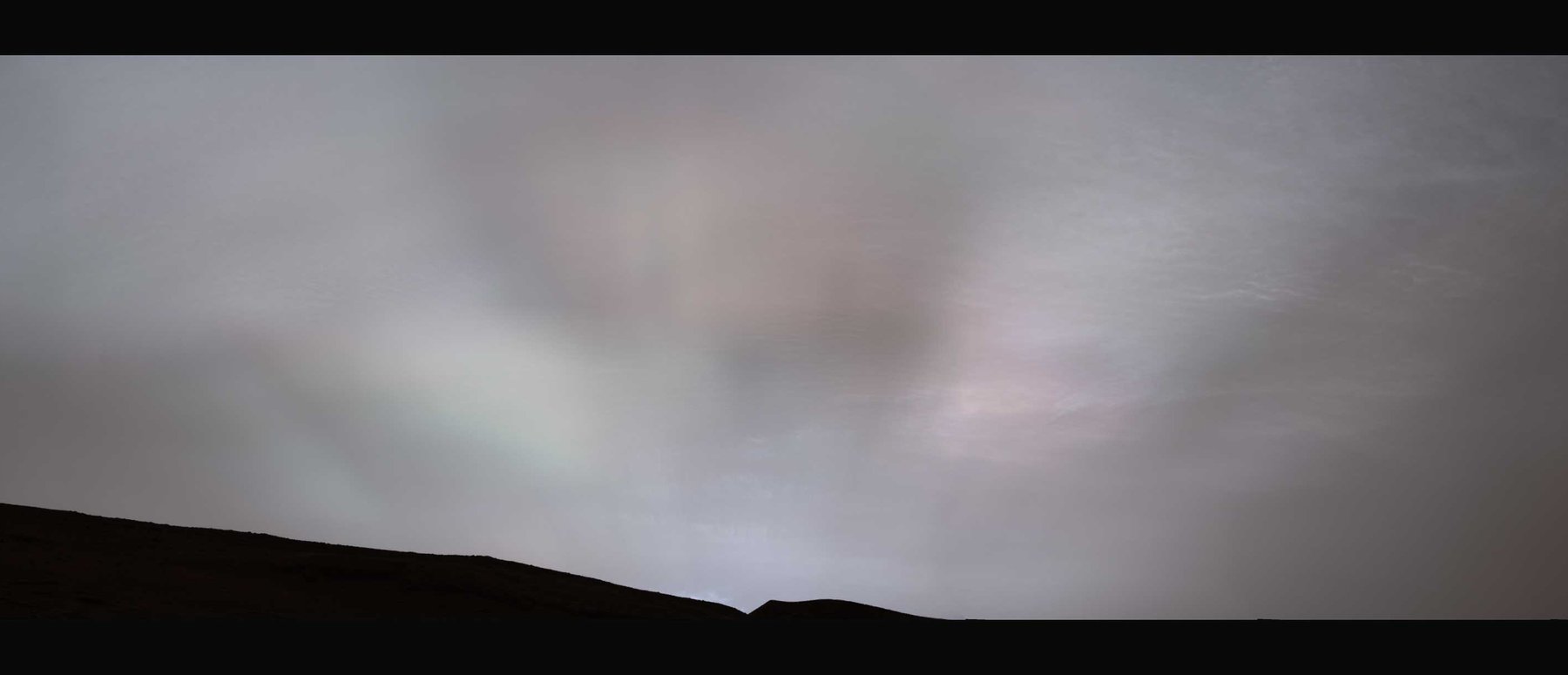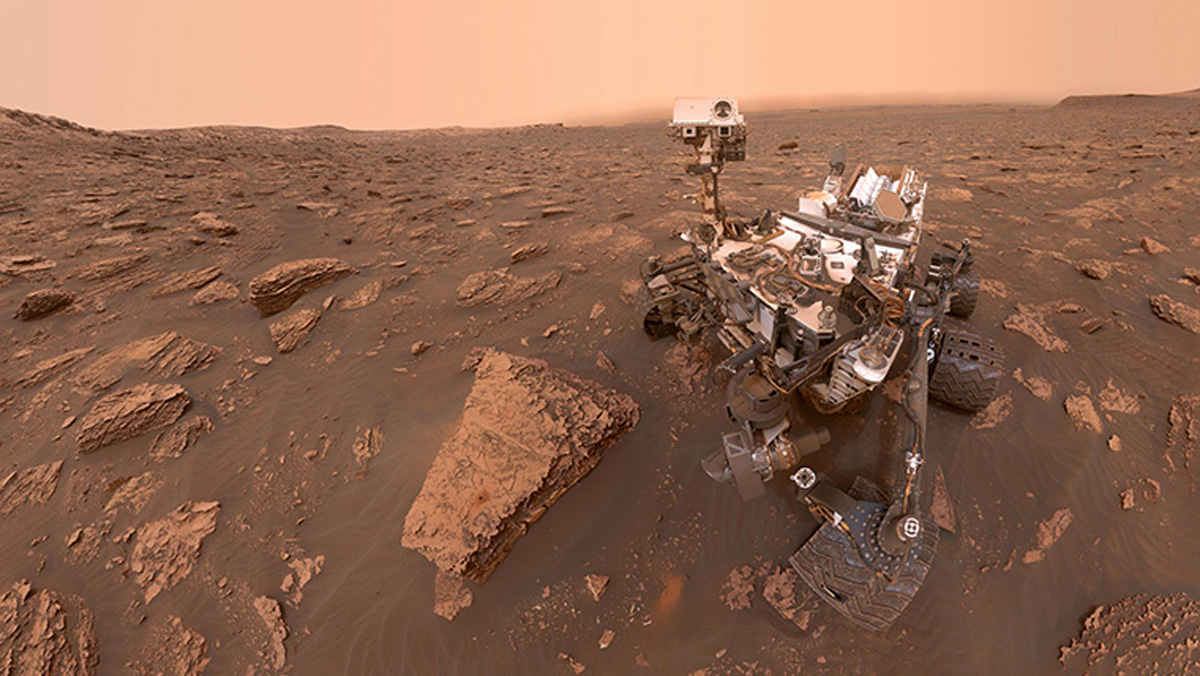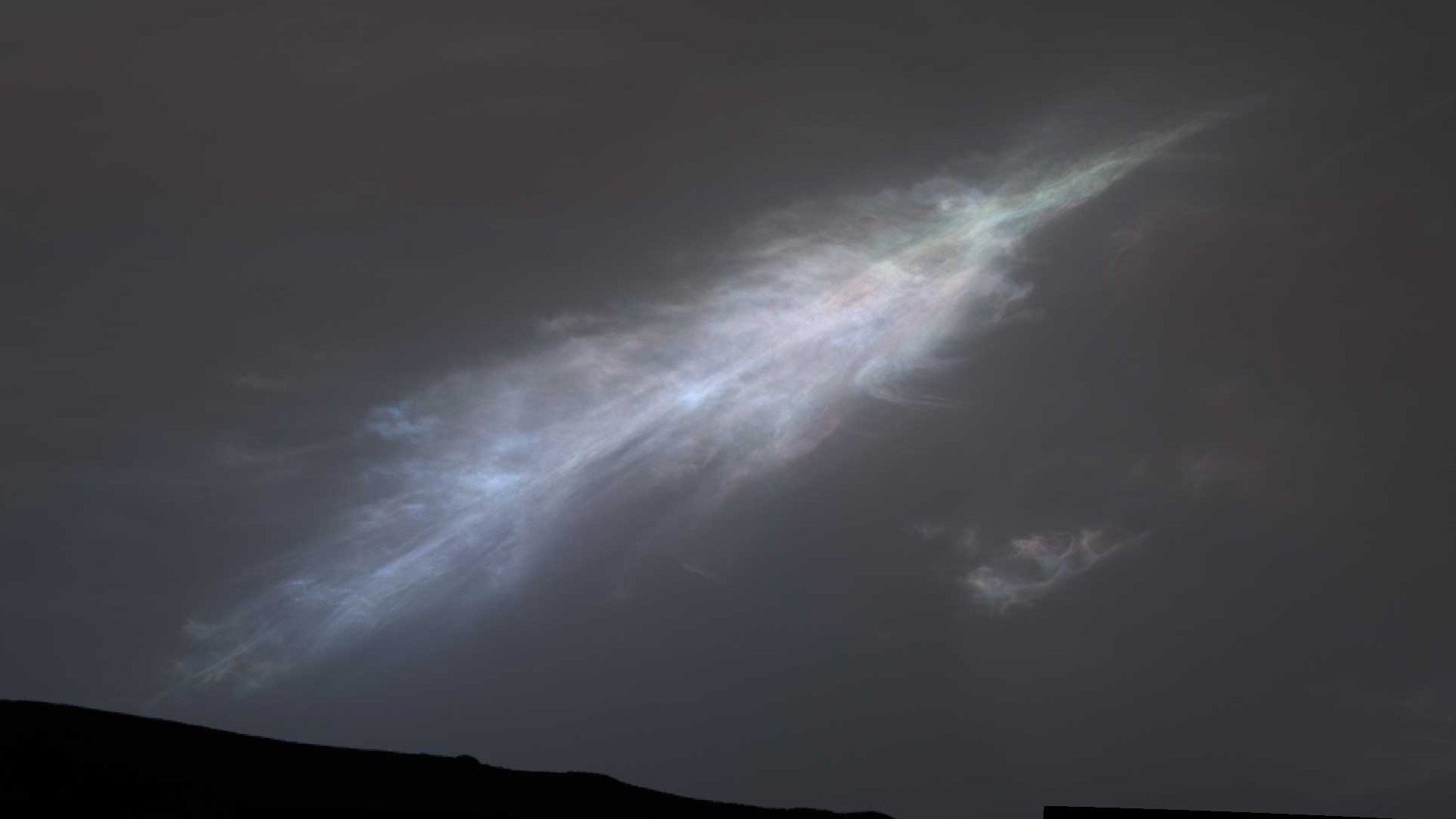NASA's Mars rover Curiosity sees dazzling 'sun rays' over Red Planet
The robotic rover caught the rays of the descending sun as it started a new cloud-imaging mission on the Red Planet
NASA's Curiosity Rover has captured a dazzling image of rays from the setting sun at twilight on Mars. The image, which marks the first time sun rays have been viewed clearly over the Red Planet, was captured by the robotic rover on Feb. 2, 2023.
The light known as "crepuscular rays" from the Latin word for "twilight," can be seen illuminating a bank of clouds over Mars.
The image came about as part of the Curiosity rover's new mission on Mars: Observing clouds over the planet during its twilight hours. The new investigation builds upon previous observations of Martian clouds during nighttime, known as "noctilucent" or night-shining clouds, conducted by the veteran rover which has been exploring the Red Planet since August 2012.
Related: Curiosity rover: The ultimate guide
The clouds featured in this new image are different from other Martian clouds which usually hover over the Red Planet at an altitude no higher than 37 miles (59 kilometers). These twilight clouds are at a higher altitude where the sky over Mars is especially cold indicating that the clouds in this image may be composed of frozen carbon dioxide, also known as "dry ice."
By studying clouds Curiosity is providing scientists with vital information about the weather on Mars and the composition and temperature of the Martian atmosphere. Cloud studies can also reveal details of the winds that pass over the planet's surface.
The 2021 survey of Mars' noctilucent clouds was conducted using Curiosity's black and white navigation cameras which were able to provide a detailed look at cloud structures as they moved across the Martian skyline.
Breaking space news, the latest updates on rocket launches, skywatching events and more!
This new twilight survey, which began in January 2023 and will run until mid-March this year, produces color images thanks to also incorporating Curiosity's color Mast Camera (Mastcam). A look at the clouds in color may help researchers determine how cloud particles gather over time.
Also as part of this observing campaign just after sunset on Jan. 27, 2023, Curiosity also captured a beautiful image of a feather-like cloud over Mars. The color capacities of Mastcam allowed the rainbow-like, or iridescent, qualities of the cloud to shine.
"Where we see iridescence, it means a cloud's particle sizes are identical to their neighbors in each part of the cloud," Space Science Institute atmospheric scientist Mark Lemmon said in a statement. "By looking at color transitions, we're seeing particle size changing across the cloud. That tells us about the way the cloud is evolving and how its particles are changing size over time."
Both the twilight cloud and feather-like cloud images are panoramas that are created by stitching together 28 images captured by Curiosity and then beamed to Earth.
Follow us @Spacedotcom, or on Facebook and Instagram.

Robert Lea is a science journalist in the U.K. whose articles have been published in Physics World, New Scientist, Astronomy Magazine, All About Space, Newsweek and ZME Science. He also writes about science communication for Elsevier and the European Journal of Physics. Rob holds a bachelor of science degree in physics and astronomy from the U.K.’s Open University. Follow him on Twitter @sciencef1rst.



